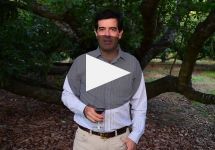Maquis Lien 2004
-
Wine &
Spirits


Product Details
Your Rating
Somm Note
Winemaker Notes
Vina Maquis Lien is a blend of Syrah, Carmenere, Cabernet Franc, Petit Verdot and Malbec grapes, resulting in a disinctive wine that reflects the special plot of land the Hurtado Vicuna family owns in the Colchagua Valley in Chile.
The vineyards and winery are located at the confluence of two historic rivers, the Chimbarongo and the Tinguiririca, which brought down from the Andes sediments that established teh vineyard's alluvial soils, and channel cool breezes from the Pacific Ocean, contributing to the richness and fruitiness of the wines.
Ricardo Rivadeneira Hurtado and his team pride themselves in creating such a generous red wine full of character and a sense of place.
Blend: 50% Syrah, 23% Carmenere, 12% Cabernet Franc, 8% Petit Verdot, 7% Malbec
In Chile's native Mapuche language, lien means "silver metal"—a reference to colonial Spanish coins that were once melted to make fine jewelry, like the lizard on the Maquis label.
Professional Ratings
- Wine & Spirits
Other Vintages
2019-
James
Suckling -
Wine
Spectator -
Robert
Parker
-
Robert
Parker -
Wine
Enthusiast -
Wine
Spectator -
James
Suckling
-
Robert
Parker -
James
Suckling -
Wine
Spectator -
Wine
Enthusiast
-
Robert
Parker -
James
Suckling
-
Wine
Spectator -
Wine
Enthusiast -
James
Suckling
-
James
Suckling -
Tasting
Panel -
Robert
Parker
-
Wine &
Spirits -
Robert
Parker -
James
Suckling
-
Wine &
Spirits -
James
Suckling -
Tasting
Panel -
Robert
Parker -
Wine
Enthusiast
-
Wine
Enthusiast
-
Robert
Parker
-
Wine &
Spirits

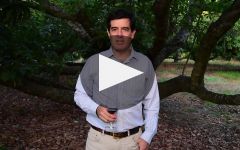
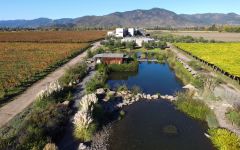
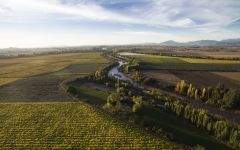



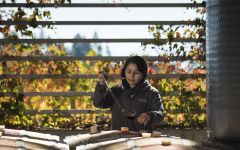

The Hurtado family has owned the Viña Maquis vineyard for more than a century, but it wasn’t until almost 20 years ago that the family decided to make their own wine out of the terrific grapes in their own backyard. They built a state-of-the-art gravity flow winery and set out to make the Maquis winery one of the great properties in all of South America.
Located in Colchagua Valley, the winery’s focus is on distinctive single-vineyard, estate wines, as well as producing “balanced” wines that are not over-ripe (resulting in excessively high alcohol) but also not exhibiting any of the “green” character that sometimes plagues wines picked from grapes that have not fully matured. The Maquis main vineyard is essentially an island: it is deeply influenced by the Tinguiririca River on one side and the Chimbarongo Creek on the other. These two large waterways once brought alluvial sediment from the Andes and today act as pathways for cool coastal breezes that help moderate the warm Colchagua summers, contributing to the intensity, character, fruitiness and mineral elements of the Maquis wines. Maquis is fortunate to have such a privileged location.

With hundreds of red grape varieties to choose from, winemakers have the freedom to create a virtually endless assortment of blended red wines. In many European regions, strict laws are in place determining the set of varieties that may be used, but in the New World, experimentation is permitted and encouraged resulting in a wide variety of red wine styles. Blending can be utilized to enhance balance or create complexity, lending different layers of flavors and aromas. For example, a red wine blend variety that creates a fruity and full-bodied wine would do well combined with one that is naturally high in acidity and tannins. Sometimes small amounts of a particular variety are added to boost color or aromatics. Blending can take place before or after fermentation, with the latter, more popular option giving more control to the winemaker over the final qualities of the wine.
How to Serve Red Wine
A common piece of advice is to serve red wine at “room temperature,” but this suggestion is imprecise. After all, room temperature in January is likely to be quite different than in August, even considering the possible effect of central heating and air conditioning systems. The proper temperature to aim for is 55° F to 60° F for lighter-bodied reds and 60° F to 65° F for fuller-bodied wines.
How Long Does Red Wine Last?
Once opened and re-corked, a bottle stored in a cool, dark environment (like your fridge) will stay fresh and nicely drinkable for a day or two. There are products available that can extend that period by a couple of days. As for unopened bottles, optimal storage means keeping them on their sides in a moderately humid environment at about 57° F. Red wines stored in this manner will stay good – and possibly improve – for anywhere from one year to multiple decades. Assessing how long to hold on to a bottle is a complicated science. If you are planning long-term storage of your reds, seek the advice of a wine professional.

Dramatic geographic and climatic changes from west to east make Chile an exciting frontier for wines of all styles. Chile’s entire western border is Pacific coastline, its center is composed of warm valleys and on its eastern border, are the soaring Andes Mountains.
Chile’s central valleys, sheltered by the costal ranges, and in some parts climbing the eastern slopes of the Andes, remain relatively warm and dry. The conditions are ideal for producing concentrated, full-bodied, aromatic reds rich in black and red fruits. The eponymous Aconcagua Valley—hot and dry—is home to intense red wines made from Cabernet Sauvignon, Syrah and Merlot.
The Maipo, Rapel, Curicó and Maule Valleys specialize in Cabernet and Bordeaux Blends as well as Carmenère, Chile’s unofficial signature grape.
Chilly breezes from the Antarctic Humboldt Current allow the coastal regions of Casablanca Valley and San Antonio Valley to focus on the cool climate loving varieties, Pinot Noir, Chardonnay and Sauvignon Blanc.
Chile’s Coquimbo region in the far north, containing the Elqui and Limari Valleys, historically focused solely on Pisco production. But here the minimal rainfall, intense sunlight and chilly ocean breezes allow success with Chardonnay and Pinot Noir. The up-and-coming southern regions of Bio Bio and Itata in the south make excellent Riesling, Chardonnay and Pinot Noir.
Spanish settlers, Juan Jufre and Diego Garcia de Cáceres, most likely brought Vitis vinifera (Europe’s wine producing vine species) to the Central Valley of Chile sometime in the 1550s. One fun fact about Chile is that its natural geographical borders have allowed it to avoid phylloxera and as a result, vines are often planted on their own rootstock rather than grafted.
